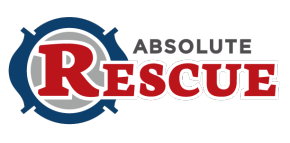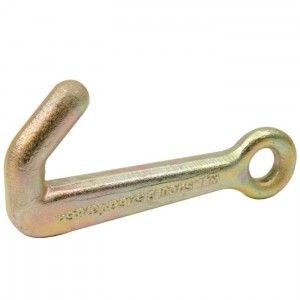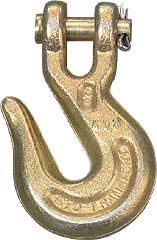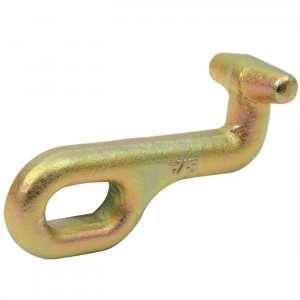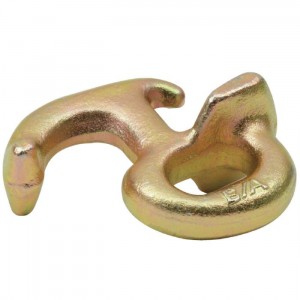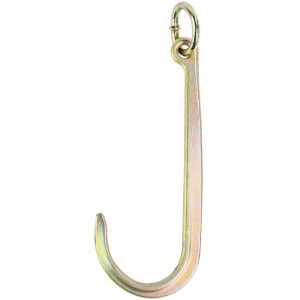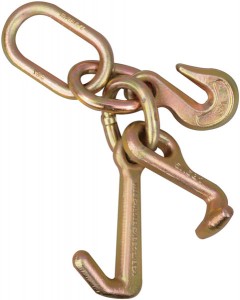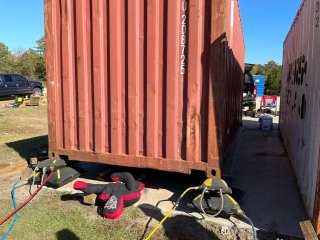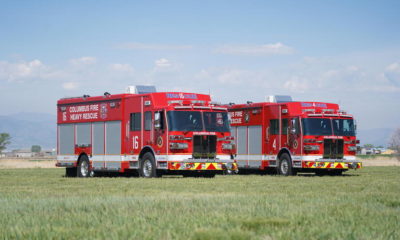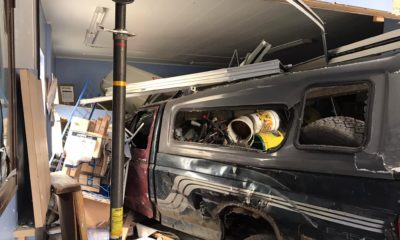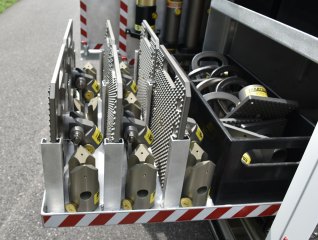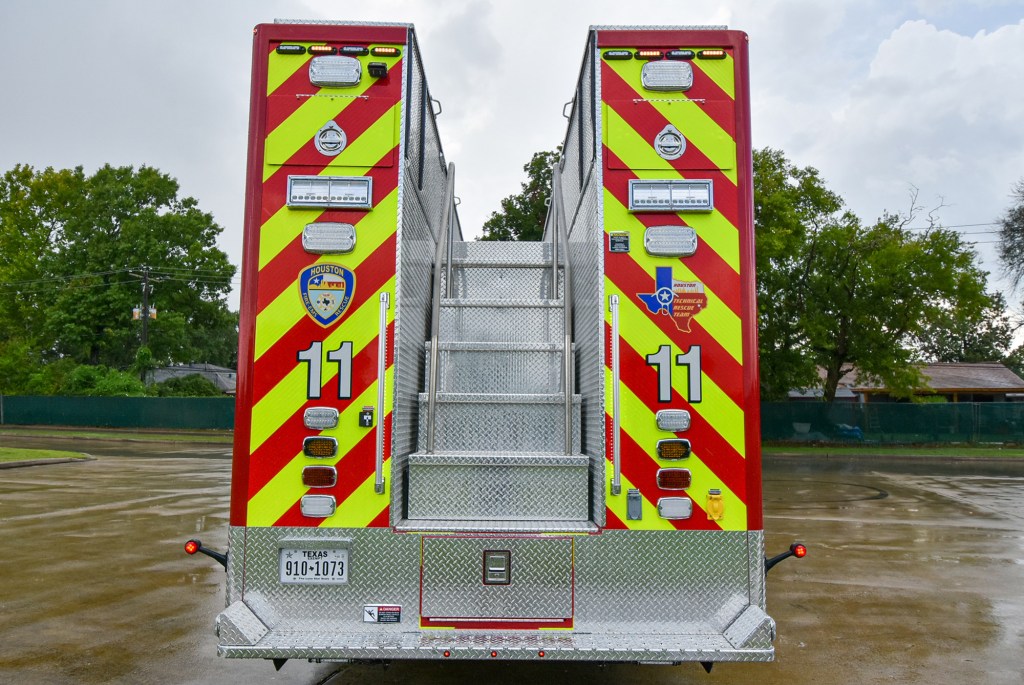What Grade of Chain for Rescue Use?
Answering the question of which grade of chain to use for rescue applications is not so cut and dry. Chains come in various strengths depending on intended usage. Grade 70 chains for example are typically used in towing applications. Grade 80 or better are the only chains rated for overhead lifting. Some say that since Grade 70 chains are used by tow operators to pull and load vehicles onto a flatbed tow truck than rescuers can use them. Others say that you need a chain that is rated for overhead lifting. Firehouse Expo HOT instructor Billy Leach, recommends that only Grade 80 or better should be used for extrication. My department has Grade 70 chains on the heavy rescue. What does your department use? A more important question is what chain should you use?
“Working load limit” “Proof test” and “Minimum break load”
- Weight Load Limit (WLL) is the maximum working load designed by the manufacturer.
- Proof Test is where a load is applied to the newly produced chain as a quality control measure. The proof test is not a performance measure, it is only intended to draw the manufacturer’s attention to any flaws in the chain. The common load applied is twice the WLL, or half the expected break load.
- Minimum Break Load (MBL) is the minimum force which chain or components must withstand before failure.
- Safety Factor (SF) is the structural capacity of a chain beyond the expected loads or actual loads. The safety factor is a ratio of maximum strength to intended load for the actual item that was designed. The design load being the maximum load the part should ever see in service.Commonly shown in a ratio like 4:1.
The Meaning of Chain Grade Numbers
The chain grade numbers which manufacturers use are actually one tenth of the actual grades. Therefore, our grade 80 is 800, grade 70 is 700, and so on.
The grade refers to the tensile strength of the chain. This is expressed in newtons per square millimeter (a newton is approximately 0.224805 lbs). The tensile strength is calculated by multiplying the grade times the area of the two cross sections of a link.
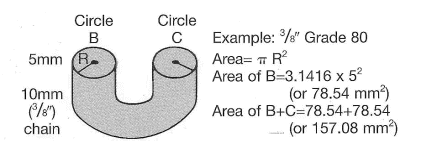
(Area) 157.08 mm2 x 800 n (Grade)=125,664 newtons ultimate breaking strength
125,664 newtons x .224805=28,250 lbs ultimate breaking strength
125,664 newtons÷1000=125.66 kn (Kilonewtons)
Is there a strength difference between Grade 70 and 80? Compare a 3/8” Grade 70 that has a working load of 6,600 Lbs with a 4:1 safety factor with a 3/8” Grade 80 that has a working load of 7,100 Lbs with a 4:1 safety factor. The higher grade 80 chain only gives you a 7% gain in strength going from Grade 70 to 80.
So which chain should you use? I referenced a post from Firehouse.com University of Extrication forum named Overhead Lifting and Chain Grade.
Grade 70 chain is made from heat treated Carbon steel which produces a more closed surface porosity as well as removing the high susceptibility to Hydrogen embrittlement. Grade 70 chains are galvanized, Zinc Chromated or treated with some other corrosion resisting sacrificial anode material. They survive the salt spray test for many days (instead of hours for 80/100). They are MUCH tougher than the 80/100 chains. They resist battery acid extremely well due to their sacrificial anode coating as well as their resistance to Hydrogen embrittlement.
Grade 70 chain is the correct choice for extrication. Grade 70 chain is called “Transport” chain. It is made of heat treated Carbon steel. It is still incredibly strong, and the lack of the special alloys both produces a more closed surface porosity as well as removing the high susceptibility to Hydrogen embrittlement. Grade 70 chains are galvanized, Zinc Chromated or treated with some other corrosion resisting sacrificial anode material. They survive the salt spray test for many days (instead of hours for 80/100). They are MUCH tougher than the 80/100 chains. They resist battery acid extremely well due to their sacrificial anode coating as well as their resistance to Hydrogen embrittlement.
Hooks and Clusters
Billy Leach has provided a bunch of information on chains and hooks from his HOT classes at Firehouse Expo last week. Make sure you print out, read, and share all of his Hands-On Training Heavy Rescue For Heavy Vehicles pdf handouts below:
- BRR1 Course Handout-5 Step Discipline
- BRR1 Course Handout-Chains
- BRR1 Course Handout-Hooks and Shackles
- BRR1 Course Handout-Synthetic Slings
- BRR1 Course Handout-Timber Cribbing Use
- BRR1 Course Handout-Wire Rope
- BRR1 Course Handout-Wire Rope Termination
Safety
Check Wear Regularly
Building Collapse
Houston Fire Department’s Trailer 11
Check out Houston Fire Department’s new Trailer 11 purchased from Metro Fire Apparatus Specialists, Inc. It’s packed for of Paratech equipment with room for more!

Houston Fire Department’s Trailer 11
Check out Houston Fire Department’s new Trailer 11 purchased from Metro Fire Apparatus Specialists, Inc. Check out the pictures below and make sure you follow the social media pages from Metro Fire Apparatus Specialists.
Overall Pictures
Compartments Pictures
Rear Pictures
Heavy Rescue
Overturned Tractor-Trailer Extrication
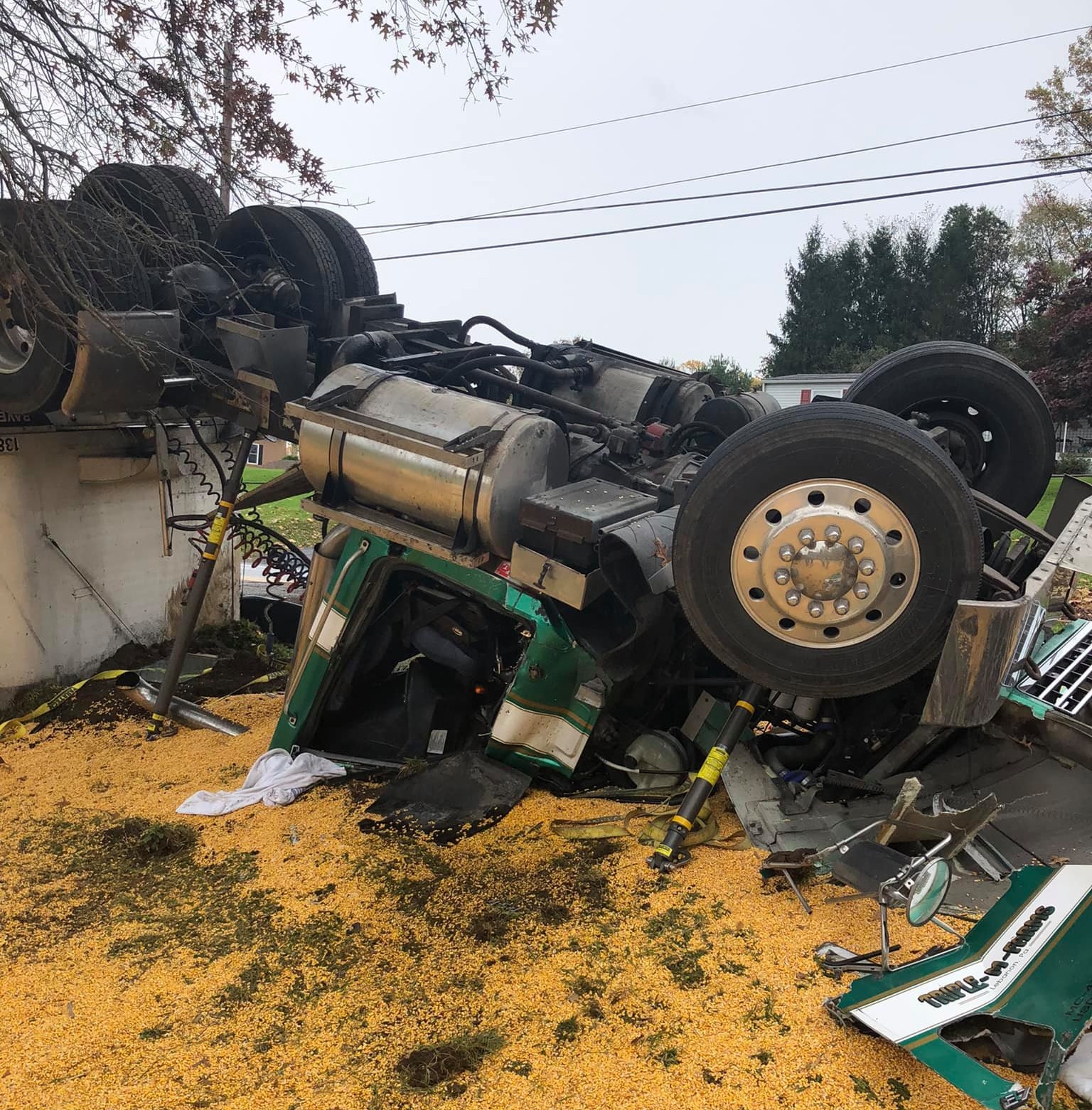
Overturned Tractor-Trailer Extrication
Check out the overturned Tractor-Trailer, confirmed entrapment, and power pole down that Elizabethtown Fire Dept Station 74 had earlier today.

Large Vehicle with Heavy Entrapment
The Washtenaw County Technical Rescue Team recently assisted Milan Area Firefighters with this complex extrication. Team members assisted Milan Firefighters and utilized HURST Jaws of Life and Paratech to extricate the heavily entrapped driver quickly.
